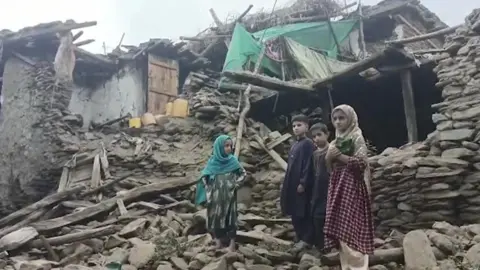A 6.0 magnitude earthquake has struck Afghanistan's mountainous eastern region, with authorities saying hundreds of people have been killed.
The quake hit at 23:47 local time on Sunday (19:17 GMT) and its epicentre was 27km (17 miles) away from Jalalabad, the country's fifth-largest city, in eastern Nangarhar province.
It was shallow - only 8km deep - and was felt 140km away in the capital, Kabul, as well as in neighbouring Pakistan. Hundreds of people are thought to have died.
The initial quake was followed by a number of large aftershocks, which are thought to have caused further deaths. Details are still emerging and it could be some time before the extent of the damage and number of deaths is known.

Initial reports indicate significant casualties and widespread damage across parts of Nangarhar and Kunar provinces. These mountainous areas are extremely challenging to reach even in the best of times, which is hampering rescue and relief operations.
More than 600 people are feared dead, the Taliban's interior ministry has said, but warns there is still no clear death toll. The road leading to the epicentre has been blocked because of a landslide, so the Taliban government is using helicopters to get people out.
Multiple sources from the government have said that dozens of houses are buried under the rubble. Aid from international organisations has been requested, as access by road to the worst-hit areas is still blocked.
Afghanistan was pushed into economic collapse when the Taliban took over, leaving more than 23 million Afghans in need of humanitarian assistance. Most foreign donations to Afghanistan have been suspended, and international sanctions continue to affect aid delivery.
Afghanistan is also very prone to earthquakes as it is located on major fault lines where tectonic plates collide. The impact of earthquakes is compounded by poor building standards and the natural mountainous terrain, making relief efforts particularly difficult.
As the situation continues to develop, with challenges of communication and transportation, the full extent of the damages and required assistance in the area remain unclear.


















